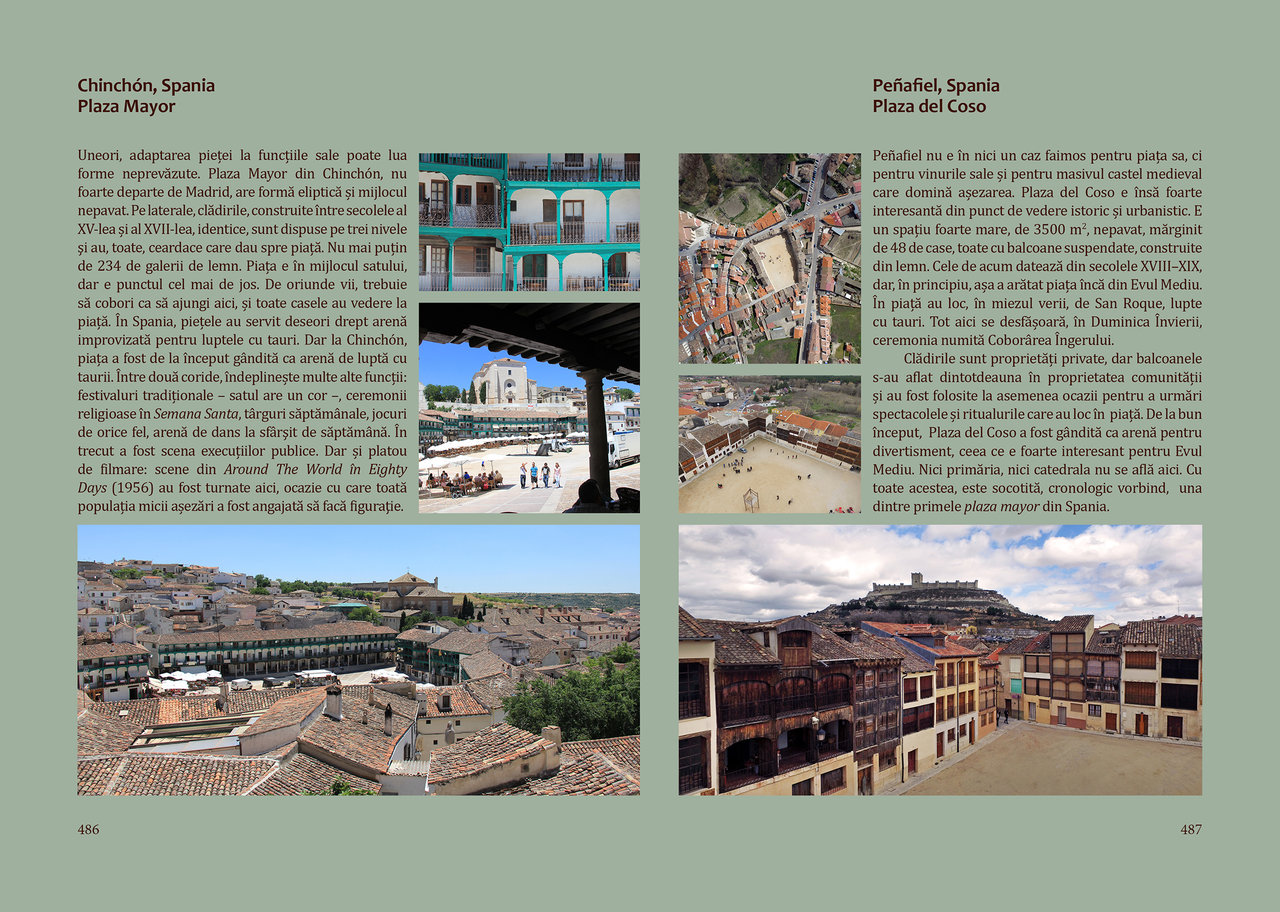 Summarising Cities. Europe’s Squares and their Histories tells the story of urban squares throughout Europe. Over 500 pages long, the book combines text and images, some of which are aerial, taken with the aid of a drone. A square is a summary: historical, architectural, social. In a city square, one can see clearly and simultaneously all of the layers of human and social life. In this respect, the square is a privileged space.
Summarising Cities. Europe’s Squares and their Histories tells the story of urban squares throughout Europe. Over 500 pages long, the book combines text and images, some of which are aerial, taken with the aid of a drone. A square is a summary: historical, architectural, social. In a city square, one can see clearly and simultaneously all of the layers of human and social life. In this respect, the square is a privileged space.
Cătălin D. Constantin, Summarising Cities. Europe’s Squares and their Histories
(Orașe în rezumat. Piețe din Europa și istoriile lor),
Bucharest, Peter Pan ART and
„Ion Mincu” Universitar Publishing Houses,
with financial support of National Cultural Fund’s Administration (AFCN), 2017
Over 400 illustrations
Pages: 512
Format: 16,5/23,5 cm
Author: Cătălin D. Constantin
Graphic Design: Cătălin D. Constantin
Proofreading: Luana Schidu
ISBN: 978-606-92300-4-6
Language: Romanian
Buy the book.
In his book, Cătălin D. Constantin leaps across the centuries in order to convey the story of what the square means for Europe. His book reminds me of words I heard in my early twenties. I was with my best friend, Antoine de Beaufort, on the Mediterranean coast near Toulon. De Beaufort knew the great writer Charles Maurois. Elderly by that time, he recounted his memories, explaining how the first time he took a ship to Greece, upon seeing the Acropolis after rounding the coast, he cried: “C’estn’est pas beau, c’est Le Beau!”
Neagu DJUVARA
This book sets out a perspective where place and habitation naturally complete each other. The square is, in the author’s vision, a non-Newtonian space, presented through energies, not just through structures and functions. Therefore, this book is completely new in its method. Cătălin D. Constantin carefully weaves images into a language that appears to be merely literary, but is also scientific in its content. This is no simple juxtaposition, but a well thought-out way of building a special discourse, the only discourse capable of offering a reading of space in terms of non-matter, in terms of energies. The novelty is not only in its approach, but also, I would argue, in its epistemology. Deleted:
Vintilă MIHĂILESCU
The anthropological vision that is uncovered in this book has shown itself to be a weaver of spells, and can be considered a postmodern variant of what Malinowski calls the magical art of the ethnographer.
Rodica ZANE
Cătălin D. Constantin’s perspective regarding the relationship between real and imaginary architecture, is remarkable.
Sorin VASILESCU
Publishing project co-financed by the Administration of the National Cultural Fund. The book appears as a co-edition with Editura Universitară “Ion Mincu”.



















